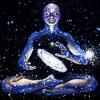-
Content count
1,539 -
Joined
-
Last visited
-
Days Won
6
Everything posted by Antares
-
I just disagree. Not going to argue with you. If you can invent your own Ming methods then partially I would agree with you. But I don't know anyone who has invented it. Oh, sorry, my fault, we have one here. Anyone one else? Even CD used taiji practice that was not invented by him
-
That one has/had a teacher The "Nine Immortals" typically refers to legendary figures in Chinese lore, often associated with embodying virtues like love, courage, compassion, and knowledge, serving powerful deities or emperors, or appearing in fantasy settings as powerful cultivators in sects like the Nine Immortals Peak Sect or Nine Immortals Palace, distinct from the more famous Eight Immortals but representing divine agents or aspirational beings
-
It depends on sect but from what i know - In the West, northern schools have become widespread, where the main emphasis is on Xing, and Ming, if cultivated at all, is done so to a lesser extent in the initial stages of practice. Ideally, there should be a precise 50/50 balance, otherwise there is a significant risk of deviations. In very rare systems, such a correct ratio of cultivation methods for Xing and Ming exists
-
These 2 are also in neigong. But not all neigong systems are good enough. Where else should it be? As for how to know if it is correct - read school/sect texts and check how it correlates with your practice If it does not - you do smth else but not nei...
-
Yeah, Daoist texts have no merit but ChiDragon' understanding that he has got through AI has it. It does not exist, Daoist made it up. You just have to be "real man" that means: you should be well-read, smart, able to communicate with AI, have biceps, English boots, and you also need to help grandmothers cross the street.
-
This case is about basic psychology. In Daoism, nothing serious can be achieved without a teacher. That’s a law. But there are people who want to deceive the Dao and themselves. I have read on this forum that some people believe it's possible to achieve 'transmission of knowledge' directly from the Dao and that a teacher is not necessary. This approach is dangerous both for those who believe in this concept and for others to whom they spread these ideas. This is another reason why no one will widely share their practice and knowledge — these people will start inventing their own methods, achieving 'significant' results as they see it, and then teaching others while also making money from it. Such cases have happened more than once. ChiDragon is trying to convince himself that he is doing everything right, he doesn't need the opinions of others. He is here to teach. The outcome of such an approach leads to deviations that become increasingly difficult to correct over time, and in some cases some people can descend into madness. They no longer understand what is happening to them
-
Also I doubt he is native Chinese. Native Chinese don't wear British boots
-
This is the picture from authentic daoist text. How it can be manipulation? There can be people who can't understand it. Then you have to read text and at least try to understand it. Believe me no one from any sect would show up here and disclose all "insiders" secrets. At least you can see to what part the character 命 is applied. So 命 cant mean just BODY as ChiDragon states. If he understands the language for him it is easier to get it at least on mental level but I am afraid...
-
ATP leakage - new daoist term!
-
This is pure manipulation on your part. I will put it like that - I wont use any language but the picture from quite authentic daoist text I am not sure what is your goal to be here. So you say it is all about BODY and ATP? Seriously
-
I only said your translation was not in accordance with Daoist definition of 命 That' the matter In this case this thread must be moved to "Fitness and Calisthenics" subforum
-
This is very simplified and incorrect understanding of the original text.
-
So according to your concept your shen does not exist. ATPDragon
-
Alright, if you care how would you translate and understand this one here: 古圣有言曰命由性修 性由命立 命者炁也性者神也炁 则本不离神神则有时 离炁 and this 炁则本不离神 ?
-
Thus this site must be renamed to thefakedaobums.com
-
Interesting how many people here and daoist masters of the Past would agree with your statements? Or you do not care? Then
-
That's fine but this is qigong work + fitness/calisthenics. It helps to some degree too but can't resolve main issues in human being
-
Yes, it is about channels that TCM people are not aware of. They do not work with it and also they work on more superficial level
-
Well, what about 醫家不知有此 ? This is from 奇經八脈考
-
Why don't you want to find a knowledgeable teacher in China?
-
Are you Chinese?
-
This is like you say because what you do is mostly fitness, no more than that. Of course, there is more freedom in fitness
-
Well, there are different approaches to it. WLP is the school where there are closer relationships, but there are other approaches as well. Southern schools require closer relationships, while in northern ones it is not like that — the student receives the method and gets in touch with a teacher sometimes, so it is more open to the public, but the student is less dependent on the teacher. This is because in Southern methods there is a much bigger chance of deviations, as Ming work is involved from the very beginning; the more Ming one has, the greater the chance of deviations
-
For example, this method: https://all-dao.com/features-jiuyangshengong.html works only when transmitted and in presence of the teacher/instructor. if one tries to do it without such transmission they will get nothing at all or deviations. also to make it working one must practice preparatory Daogong system for some period of time. even Daogong system must be done with instructor otherwise there will 99% chance you will get deviations so in fact teacher activates pre - heaven mechanism
-
Yeah, it may be does the search through the Bums and takes ChiDragon' posts as the truth and then recommends it back to ChiDragon. Then he will say to all of us: "You see, I was right, AI is telling the same things that I say!"





